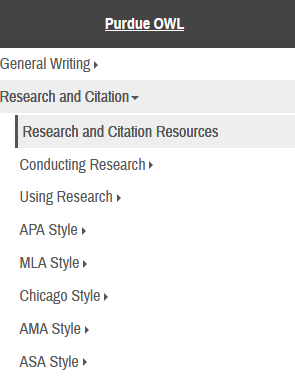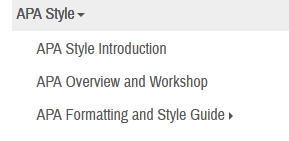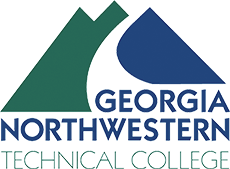How to Cite Sources
 Processing Request
Processing Request
What is Citing?
Citations are a way for writers to acknowledge where they have obtained information. They are broken into two categories: in-text citations, which gives readers a short version of where the information came from while they are reading, and works cited pages, which offer a full version of where the information came from (located at the end of a paper, chapter, or book). Works cited pages are also frequently called references pages and bibliographies.
Why Cite?
Citing is important, both in-text and in a works cited or reference page. When sources aren't cited, it's considered stealing the information from them. Research should be shared between people, whether it's students in a class, businesses, or developers; however, students must be able to show where the information was obtained. This is so the person who wrote the original information gets credit, but it also gives the idea some authority, showing that someone else has had this idea. It allows instructors to backtrack and see if the information is verifiable and determine how accurate it is. Of course, it's also important because most instructors require it!
When is Citing Necessary?
According to the OWL at Purdue website, citations (in-text and works cited) are required whenever text is directly quoted (taken word for word, such as copy and pasting), when paraphrasing (re-writing the text, but keeping the same general language), and when the general ideas are summarized. The MLA Handbook says that citations aren't necessary for knowledge that the general reader has. For example, citations would not be necessary if the paper included that Shakespeare was a British poet and playwright, because the majority of students and instructors would be familiar with that. On the other hand, quoting "...Shakespeare, along with various other wealthy citizens of Stratford, became involved in a rather complicated controversy involving a plan to enclose farming lands..." from page 21 in The Complete Works of Shakespeare (1971), a citation would be required. This is because the majority of readers would not be familiar with this information. If they wanted to find out more information, they could then look to page 21 in the book.
OWL at Purdue is a great website for learning about proper formatting and citations.
Go to OWL
If you are using MLA or APA, use the Citation Machine link to enter your citation information. Use the drop down menu on the left to choose the appropriate format before clicking Cite.

If you are not using MLA or APA or you choose not to use the Citation Machine link, select the appropriate format on the left side of the screen under Research and Citation Resources.

Click on the Formatting and Style Guide for the appropriate format.

Choose the type of material you need to cite. For example, for articles, choose Reference List: Articles in Periodicals.

Choose the type of article you need to cite. For example, for a newspaper article, choose Article in a Newspaper.

Citations are generally created using writing styles or citation styles. The two styles most likely to be used at GNTC are the American Psychological Association (APA) and the Modern Language Association (MLA) styles.
Information Used in Citations
Now, with a better understanding of what a citation is and why it is necessary, the next step is to know what kind of information goes into a citation and where to find it. The format and documentation of the information changes depending on the style required; however, the basic information required tends to be the same. Not every style will require every element listed below, but it is best to keep all of the information.
Books
To properly cite a book, take note of this information:
-
Author(s)
-
Title
-
Publisher
-
Year of Publication
-
Place of Publication
-
Page numbers (for in-text citation)
Article
To properly cite an article from a journal, magazine, or newspaper, take note of this information:
-
Author(s)
-
Title
-
Title of Newspaper/Journal/Magazine article was in
-
Day, Month, and Year of Publication
-
Volume/Issue numbers
-
Page numbers (if applicable)
-
URL or doi (if found online)
Website
To properly cite a web site or other online source, take note of this information:
-
Author(s)
-
Page Title
-
Site Title
-
Site Sponsor
-
Date of Copyright (or most recent update)
-
URL or doi
Other
There are many other places to get information. To cite from these, it is always best to check in a stylebook or with your instructor for specific instructions, as well as including the following:
-
Author(s)
-
Title
-
Publisher (or equivalent)
-
Date
